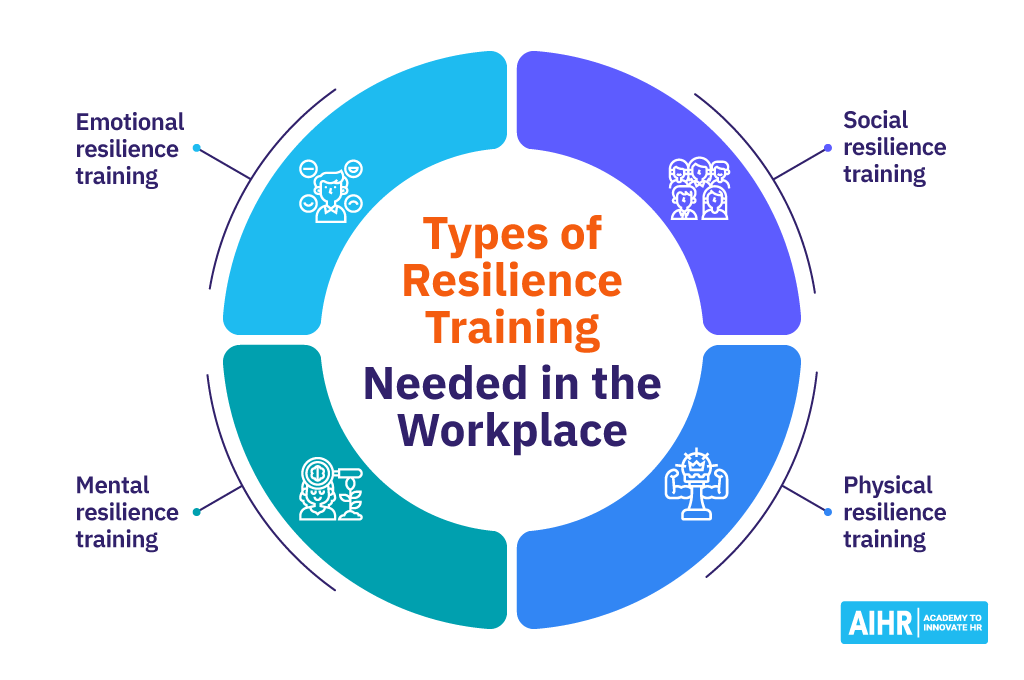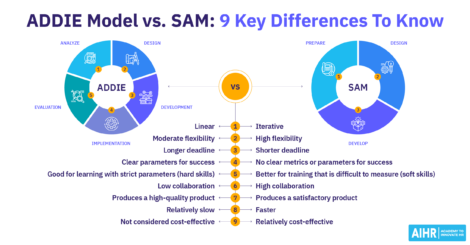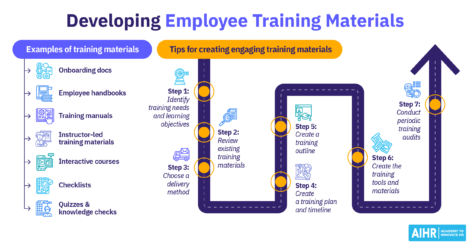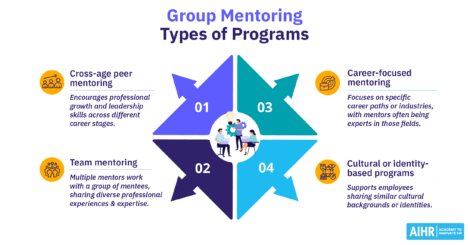Resilience Training: Empower Employees to Thrive in the Face of Change

Resilience training teaches helpful mindsets and behaviors for overcoming challenging situations, making it an effective tool for improving employee well-being, productivity, and perseverance. Organizations that build a resilient workforce can withstand the twists and turns of a complex business landscape.
This article looks into what resilience in the workplace training is all about.
Contents
What is resilience in the workplace?
Why is resilience within organizations important?
Types of resilience training in the workplace
Companies that have successfully implemented resilience training
How to develop a resilience training program
What is resilience in the workplace?
Resilience is the ability to navigate adversity and adapt to change. In the workplace, resilience means employees respond well to pressure, overcome challenges, discern options and solutions, and turn obstacles or mistakes into learning opportunities.
Resilient people possess specific characteristics, such as:
- A sense of control over choices and reactions by keeping emotions in perspective.
- A survivor mentality to persevere without feeling victimized.
- Ability to set realistic goals and follow through with them.
- A problem-solving mindset when difficult situations arise.
- Capacity to apply wisdom from past experiences to current situations.
- Self-confidence and consistent habits of self-care.
- A motivation to seek community and develop a support network.
Handling unforeseen challenges in the workplace requires a resilient workforce, and many organizations may face a resilience deficit. A Global Employee Life Evaluation by Gallup revealed that 55% of employees indicated they were struggling, 11% were suffering, and only 31% felt like they were thriving.
Why is resilience within organizations important?
Employee well-being impacts productivity. When people don’t have healthy coping skills, they feel overwhelmed. They will dwell on problems, overreact to conflict, and experience more anxiety and stress. A Mental Health America report found that 71% of employees struggle to concentrate.
Providing resilience training can put employees in a better position to remain optimistic and have the confidence and energy to handle challenges and combat occupational stress and burnout.
It can pay off in many ways, including the following areas:
- Work environment and culture: Instead of facing challenges with dread, resilient employees feel equipped to foster a positive attitude and create a healthier atmosphere to solve problems and get work done.
- Innovation: Resilient employees see challenges as learning opportunities. They are more willing to share ideas and take risks without being overwhelmed by a fear of failure.
- Communication: Resilience involves accepting feedback and being open to new ways of thinking and interacting to resolve conflicts.
- Productivity: People focus more on teamwork and outcomes to be more efficient and productive.
- Leadership development: Strong leaders need resilience to bounce back from adversity, learn from failures, and set an example of confidence for the rest of the organization. Building these characteristics in teams expands the leadership talent pool.
- Agility: Resilience encourages teams to embrace change and gives them skills that help them transition to new situations. For example, resilient employees can maintain their productivity onsite and remotely in a hybrid work model.
- Employee engagement and retention: Methods for building resilience help people avoid dwelling on the negative and feel more in control and confident about their duties. They are also more comfortable seeking support from colleagues during challenging situations. This type of environment better engages people and motivates them to stay with the company. A report (p. 26) by the American Heart Association indicates that 94% of the surveyed employees who participated in resilience training programs had a more positive perception of and commitment to their employer.

Types of resilience training in the workplace
There are different categories of resilience to consider for training purposes. Most programs incorporate more than one type to support overall resilience.
Choosing which type(s) of employee resilience training would benefit your organization depends on where the most significant need lies. Think about the struggles employees may be facing. For example, are layoffs or a restructuring coming? Will long hours be required during certain times? Do teams need to work cohesively? Will some jobs have new physical requirements?
It’s important to note that formal training programs are not the only channel for fostering resilience in the workplace. Organizational culture can also promote this via wellness resources or how work procedures and management processes are handled.
Here is an overview of the four most common resilience training themes:
1. Emotional resilience training
Emotional resilience is the ability to regulate one’s emotions during negative or stressful experiences. One can maintain a sense of calm and resolve the situation without becoming overwhelmed.
Emotional resilience training includes ways to build the following attributes:
- Self-awareness to understand how feelings influence behaviors and actions before.
- Self-control to choose reactions based on situations, not emotions.
- Perseverance to keep trying and be consistent.
- Flexible thinking that incorporates rationality, optimism, and adaptability.
- Interpersonal relationships that create healthy emotional bonds and support.
2. Mental resilience training
Mental resilience is an aptitude for acclimating to uncertainty and change. Mental strength helps people be calm in crises, remain hopeful, and make conscious choices about how to react to problems.
Mental resilience training helps people learn new approaches through:
- Identifying personal character strengths.
- Learning problem-solving skills.
- Setting goals.
- Reframing challenges as growth opportunities.
- Viewing adversity as a temporary situation.
- Putting circumstances into perspective.
3. Social resilience training
Social resilience is a group’s capacity to reorganize and adapt during disruptive circumstances. People accept each other and connect in meaningful relationships to cooperate and solve problems that affect the group.
Social resilience training contains methods for building trust, respect, empowerment, and a sense of community in the organization.
Methods may include:
- Teambuilding exercises or activities.
- Instruction on the value of diversity and inclusion.
- Allowing teams to take ownership of projects.
- Open dialogue sessions where people feel free to share ideas and speak out on issues.
4. Physical resilience training
Physical resilience is the body’s ability to meet physical demands and handle change. A person’s physical condition can relate to the energy it takes to be more resilient in other areas.
Physical resilience training would vary according to the type of organization. It can involve specific exercises that strengthen a person’s ability to do the physical aspects of their job. It can also be wellness programs that encourage employees to make healthy lifestyle choices by promoting nutritious eating, exercise, getting enough sleep, or relaxation methods.
Companies that have successfully implemented resilience training
Here’s a look at how three companies have used resilience training to their advantage:
1. Google Search Inside Yourself
Google offers its employees a course called Search Inside Yourself. It teaches meditation for gaining emotional intelligence that promotes self-understanding and better relating to others. The instruction includes three sections that cover attention training, self-knowledge development, and forming valuable mental habits.
The class is very popular among Google employees, and their feedback shows how valuable they find it. Participants have shared the following benefits of the course:
- Ability to emphasize with others instead of jumping to conclusions.
- Overcoming personal tragedies.
- Positive management of grief.
- Improved marriage relationships.
- Kinder outlook on self and others.
2. Global pharmaceutical company
A global pharmaceutical company introduced resilience training to help top management and employees at all levels cope with constant demands and changes. It taught stress reduction and durability through experiential learning that covered optimism, perseverance, teamwork, and resourcefulness.
Participants were equipped with insights and skills that they could apply in challenging situations. This allowed them to view change as an opportunity to practice their new skills rather than an intimidating obstacle. Participant surveys revealed the payoff of an increase in morale and productivity.
3. Siemens Healthineers
Medical technology company Siemens Healthineers provided an online resilience training program for a mix of employees and healthcare professionals to support them through the COVID-19 pandemic.
The sessions taught mind-body techniques to deal with stress and trauma, such as meditation, breathing techniques, and expressive writing and drawing. The training also highlighted self-care and social support.
Participant evaluation feedback was overwhelmingly positive, with 85% saying they would recommend the program to others. Respondents also stated that the training improved empathy, active listening, and human connection within the group.
How to develop a resilience training program
Whether you have full responsibility or collaborate with other stakeholders to plan and implement a resilience training program, the following steps will help you develop a comprehensive and effective program:
1. Conduct a needs assessment to identify training objectives and content
Start with finding out which needs your organization has that resilience training can meet. Methods for this include:
- Conducting interviews with key stakeholders to understand organizational goals and priorities.
- Getting input from employees through manager one-on-ones or surveys to understand current stressors and resilience levels. For instance, projects and tasks they struggle with and obstacles/distractions they face.
- Analyzing people analytics data to identify common stressors and performance gaps.
Once you’ve identified the target areas to address, you’ll know which types of resilience need to be covered. Then you can narrow down the specific training objectives and content to focus on these.
2. Determine the training format and delivery method
Resilience isn’t developed overnight, so stress resilience training is better conducted over a period of time rather than just one brief session. For example, one hour per week for six weeks.
Your chosen format and delivery method will depend on your employees’ location and the resources you can access. Some possibilities are:
- Online or in-person group training
- Gamification group or individual training
- Webinars
- Executive one-on-one training
When teams go through training together, it helps them bond and have a collective understanding to be more cohesive and supportive of each other during and after the process.
Reinforcing the training content outside the sessions with a personalized app, brief homework assignments, or mentoring sessions helps maintain the training over its duration.
3. Develop the training materials
Choosing the right materials and activities ensures the training is relevant and effective for your audience. You can touch base with a subject matter expert to give you advice on how to deliver resilience content in digestible ways.
Mixing various elements will engage diverse learning styles and make the sessions more enjoyable. For instance:
- Ice breakers
- Hands-on exercises
- Videos, slideshows, and other visual resources
- Pamphlets/handouts
- Case studies
- Scenarios/simulations
- Demonstrations/role plays
- Breakout discussions
4. Conduct pilot testing
Before you roll out resilience training for everyone, try it on a lesser scale. Assemble a small group of employees representing various roles, departments, and demographics and take them through a trial run.
By collecting participant feedback, you’ll discover what was effective and what bugs need to be worked out. If the pilot program goes well and the participants believe their input was well received, you’ll have some employees who will spread the word and create a positive buzz about this learning opportunity.
5. Evaluate the effectiveness of the training program
Once you have provided the resilience training, it is crucial that you continually monitor its effectiveness and make improvements. Some ways to evaluate the program include:
- Using surveys to measure participants’ opinions about what worked best and least about the training.
- Noting the level of employee participation and enthusiasm during the sessions.
- Interviewing supervisors to learn if desired changes and behaviors are noticeable.
- Looking for a positive impact on the organization, i.e., improved employee experience/satisfaction survey results or increased productivity/output.
6. Provide ongoing support to build resilience
Employees can benefit personally from resilience training, but team resilience must be cultivated daily in the workplace. HR should reinforce how company culture supports resilience and look out for policies or behaviors that may hinder it.
Resilience can be promoted and developed through many channels, including:
- Wellness training and programs that encourage employees to prioritize their physical and mental health.
- Reducing stress and encouraging autonomy with flexible working, such as remote work options, variable work schedules, or more opportunities to take breaks.
- Employee resource groups that build connections and social support.
- Tracking tasks to ensure teams aren’t overloaded and expected to spend too much time at work.
Incorporating resilience into company culture can mean encouraging employees to:
- Look out for their colleagues and provide support when they need it.
- Ask questions and voice their concerns.
- Express appreciation for each other.
- Speak up about potential problems.
- Ask for help when they need it.
- Maintain a healthy work-life balance.
7. Integrate resilience with other employee development programs
Look for ways to emphasize resilience throughout the employee development process to prepare them to respond productively to disruptions and uncertainty. Here are a few suggestions:
- L&D: Focus on developing empathy, collaboration, and creativity competencies. Offer more learning opportunities through experience, such as working on special assignments or project teams that challenge employees beyond their current roles.
- Performance management: Reward capability development as well as work output. Put incentives in place that motivate employees to seek out challenges and learn ways to adapt and thrive during change and chaos.
- Coaching and mentoring: Find people who demonstrate resilience to lead a mentoring program or act as informal resilience coaches within their teams. They can model behaviors and share their insights to inspire others.
Key takeaways
- Purpose of resilience training: It helps employees face uncertainty and change while remaining productive.
- The benefit of resilience training: It fosters a more robust workforce with improved employee engagement, well-being, productivity, and retention.
- Types of resilience training: Resilience training focuses on emotional, mental, social, and physical fortitude.
- HR’s role in building a resilient workforce: HR can provide training and encourage resilience through organizational culture influences and employee development strategies.
Weekly update
Stay up-to-date with the latest news, trends, and resources in HR
Learn more
Related articles
Are you ready for the future of HR?
Learn modern and relevant HR skills, online











